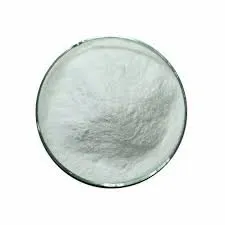
Oct . 01, 2024 13:04 Back to list
Preparation of HPMC Solution for Various Applications in Pharmaceutical and Cosmetic Industries
A Comprehensive Guide to HPMC Solution Preparation
Hydroxypropyl methylcellulose (HPMC) is a widely utilized non-ionic polymer derived from cellulose, commonly used in the pharmaceutical, food, and cosmetic industries. Its unique rheological properties and controlled release capabilities make it an essential ingredient in various applications, such as drug formulations and coatings. Preparing an HPMC solution requires attention to detail and adherence to established protocols. This article provides a comprehensive guide on the preparation of HPMC solutions, covering the necessary materials, methods, and considerations.
Materials Required
1. Hydroxypropyl Methylcellulose (HPMC) The primary ingredient, HPMC comes in various grades that differ in viscosity, substitution levels, and solubility. Selecting the appropriate grade is crucial based on the intended application.
2. Solvent (Distilled Water) High-purity distilled water is commonly used to ensure the solution's integrity and prevent contamination.
3. Mechanical Stirring Device A magnetic stirrer or a mechanical mixer is essential for achieving a uniform and consistent solution.
4. Glass Beaker A clean, dry glass beaker is necessary for mixing the HPMC and the solvent.
5. Measuring Equipment Precision balances and graduated cylinders will ensure accurate measurements of HPMC powder and water.
6. pH Meter or pH Strips For applications where pH is critical, such as in pharmaceutical formulations.
Preparation Method
1. Determine Concentration The first step is to determine the desired concentration of HPMC in the solution. Common concentrations range from 0.5% to 5%, depending on the application and viscosity requirements. For example, a 2% HPMC solution would be suitable for many standard applications.
2. Weighing HPMC Using the precision balance, weigh the appropriate amount of HPMC powder. For a 2% solution in 100 mL of water, you would need 2 grams of HPMC.
hpmc solution preparation

3. Measuring Water Measure the corresponding volume of distilled water using a graduated cylinder. In this case, measure out 98 mL of distilled water to make a total of 100 mL when combined with HPMC.
4. Initial Mixing Pour the measured water into the glass beaker and begin stirring with the mechanical stirrer. It's essential to maintain a consistent stirring speed to promote even dispersion of the HPMC.
5. Adding HPMC Gradually sprinkle the HPMC powder into the stirring water. It is critical to add it slowly and evenly, as adding too quickly can lead to clumping and an uneven solution. Ensure that the powder is submerged as soon as it is added to facilitate hydration.
6. Hydration Process Continue stirring for 30 minutes to 1 hour, depending on the viscosity of the HPMC used. During this time, the powder will hydrate and dissolve, forming a colloidal solution. If necessary, the solution can be allowed to sit for additional time to ensure complete dissolution, especially for higher concentrations.
7. Adjust pH (if necessary) If the application requires specific pH levels, utilize the pH meter or strips to measure the solution's pH. Adjust as necessary using pH buffering agents or acids/bases compatible with your formulation.
8. Final Filtration To ensure the removal of any undissolved particles or agglomerates, pass the prepared solution through a filter or a fine mesh strainer.
9. Storage Store the HPMC solution in a clean, airtight container to prevent contamination and evaporation. Label the container with the concentration, preparation date, and any other relevant information.
Considerations
- Temperature Control HPMC can be sensitive to temperature, so prepare solutions at room temperature or as specified in the product data sheet. - Stirring Speed Avoid excessive stirring after hydration, as it may introduce air bubbles into the solution, which can affect its performance.
- Shelf Life Use freshly prepared HPMC solutions where possible, as degradation may occur over time, especially if not stored appropriately.
In conclusion, the preparation of HPMC solutions involves a systematic approach that includes precise measurements, proper mixing techniques, and adherence to specific protocols. By following this guide, you can achieve a high-quality HPMC solution suitable for various applications in pharmaceutical, food, or cosmetic products. Proper preparation not only ensures the desired viscosity and function but also enhances the overall effectiveness of the final product.
-
Versatile Hpmc Uses in Different Industries
NewsJun.19,2025
-
Redispersible Powder's Role in Enhancing Durability of Construction Products
NewsJun.19,2025
-
Hydroxyethyl Cellulose Applications Driving Green Industrial Processes
NewsJun.19,2025
-
Exploring Different Redispersible Polymer Powder
NewsJun.19,2025
-
Choosing the Right Mortar Bonding Agent
NewsJun.19,2025
-
Applications and Significance of China Hpmc in Modern Industries
NewsJun.19,2025







